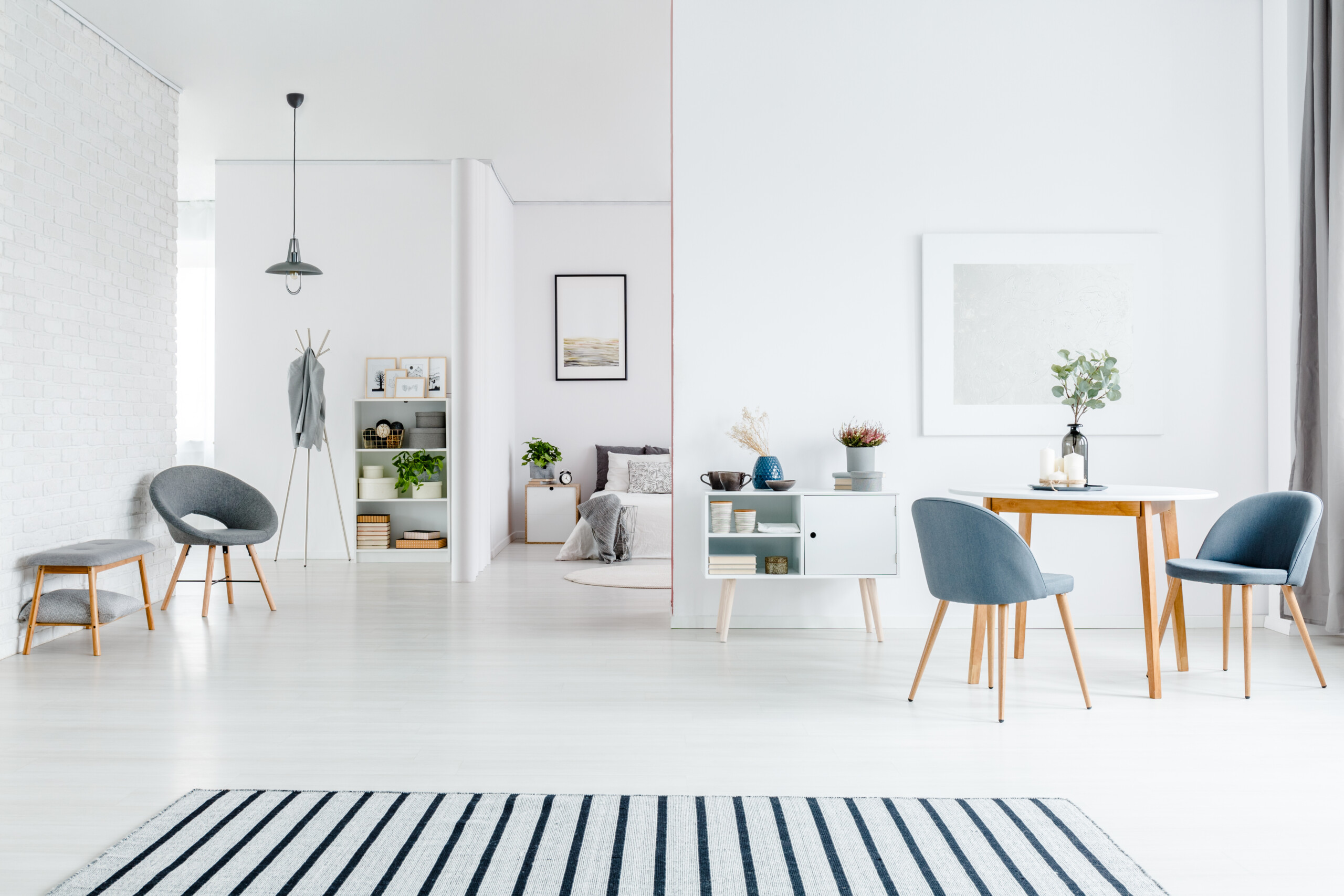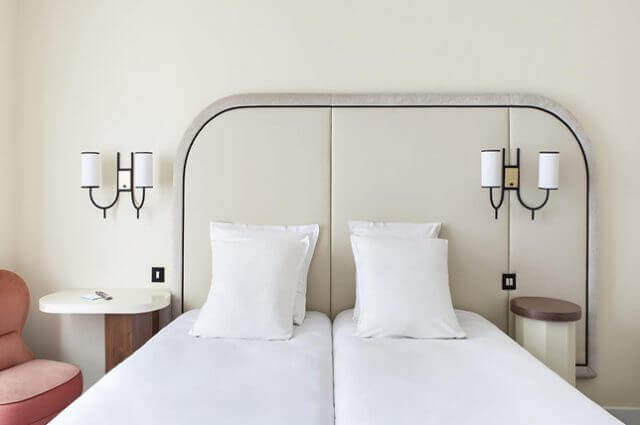
Because there’s something calming and pulled together about a monochromatic room, we’re considering its merits and the best ways to make it viable in your home – as a monochromatic interior, with a clever approach, can make a room come alive.
But creating the perfect monochrome room can be difficult; it can be challenging to know where to start with an approach to color schemes, and what does ‘monochromatic’ mean and how far does it extend? To help in defining the style, we turned to Decor Aid designers to help you learn how to design a monochromatic room.
Think of a statement-making monochromatic room, though soothing and simplified, as the complete opposite of shy and subtle. If you’re considering veering away from a selection of polychromatic hues with a monochromatic room design, it may seem a bit daunting at first. Where do you start? How much of one color is simply too much? What can you do from making a limited range of color from coming off a boring or heavy-handed? From subtle to substantial, from neutral to oversaturated, our interior designers and house paint experts weighed in on the good, the bad, and the ugly realities of monochromatic interior design.
A monochromatic room design may sound like it will be a breeze to execute, but to do it well while limiting your scope, can be all the more challenging. When done well, a monochromatic room should take full advantage of tonal takes on a hue with a variety of related tints and shades for a rich and brilliant effect, while adding textures for visual interest. When done wrong, a monochrome room design will come off as tired, uninspiring and stuck with a lack of interest and stimulation.
Whether you’re an interior design aficionado or a novice, sometimes we all need a few masterful lessons to boost our skills. And since no home can be fully realized or decorated overnight, it may take several attempts to put a monochromatic room together. So do take in as many tips as you can to skillfully master the art of monochromatic interior design with confidence while making the process much easier. So, how do you even start going about executing monochromatic design ideas when looking for inspiration? For starters, why not create a monochromatic color scheme as a rule of thumb?
If you need to learn absolutely everything it takes to ace monochromatic room design, we suggest you bookmark this feature for future reference and to fully understand why monochromatic design ideas can be so effective in effortlessly making any room instantly feel put together.
With that said, let’s go over some unfortunate misconceptions about monochromatic room design. Monochromatic interior designs extends itself to more variety that flat beige or khaki, and like we said, you can go tonal – it does not mean one single color for an entire room. How boring would that be? To achieve a beautifully realized monochromatic room, you can be explorative with any color imaginable. Think chartreuse, grays, blue – any color can be used to your liking. And while monochrome design ideas do focus on highlighting one color, that should never leave you restricted to using one take on that color. For instance, a room might be decorated with gray, silver, charcoal, smoke – you name it, yet it technically remains monochromatic because all of those gray tones are related. And it also doesn’t mean that a monochromatic room should heavily feature your selected color and nothing else. Instead, you can use white and other calming neutrals to break up the monotony. Just take a look at every room we used to illustrate monochromatic interior design here – and what do you see? While all of them feature one dynamic tone and its variations, they are also peppered with hits of various colors and various tones of their main color.
Monochromatic interior design works because it makes your design statement all the easier to digest. Unlike other takes on designing by color, which often take a lot more effort to create parallels to keep everything in sync. But with studied takes on monochromatic interior design, case, as long as you work within your defined colorway, unity and harmony will come naturally and with ease.
WHAT DOES MONOCHROMATIC MEAN?
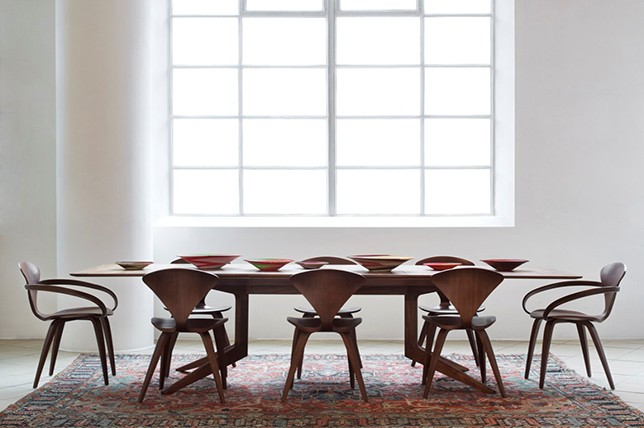
Monochrome isn’t restricted to grays, blacks, and whites. Though monochromatic translates into meaning ‘one color’, with interior design, you’re afforded a little artistic license as ‘one color’ doesn’t mean such a strict approach.
What it does mean in terms of designing a room is choosing different variations on a color. In a nutshell, say you choose orange and use different shades of the same orange tone, or you go for a hue more traditionally used in monochromatic design, like gray.
WHAT CAN MONOCHROME DO?
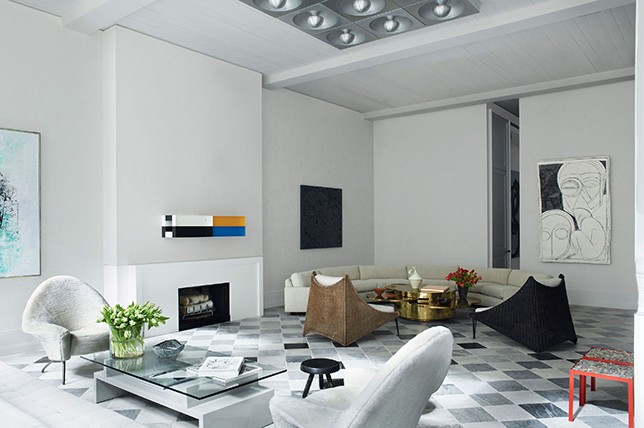
If you’re looking to highlight an aspect of a room, monochromatic interior design makes for a great direction to go. Be it art, statement furniture or just the room itself, a monochromatic color scheme is certain to draw attention to the parts of a room you want to be noticed.
Monochrome color schemes are harmonious and relaxing too, and they’ll work perfectly in any part of your home where relaxation is key. And they can still have a dramatic effect without having to contrast colors and are an excellent way of repeating colors without having to think about it too much.
CHOOSING COLORS
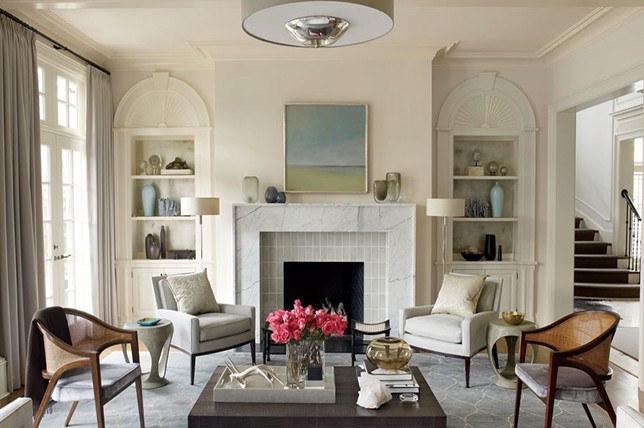
When considering monochromatic color schemes our interior designers suggest that you use three colors. Select your color and choose a range of three shades – one dark, one in the middle, and one light. This will help you create a cohesive look.
A smart practice of choosing hues is to select your base shade from a paint chart, and then use that paint chart to choose different colors which have the same base, from light to dark.
START SMALL
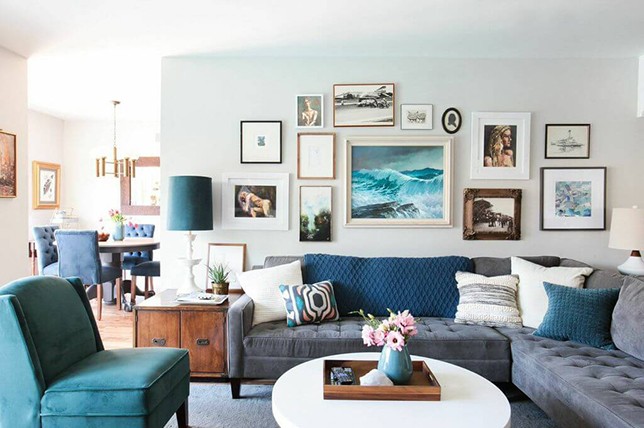
If you aren’t sure about a monochrome interior, start off with your smallest room. Usually, the bathroom, as bathrooms lend themselves perfectly to monochrome color schemes. Bathrooms are a place for relaxation and rest – a monochrome color scheme isn’t busy, it isn’t in your face, and it doesn’t give off impactful drama – it’s the perfect scheme for a relaxing space.
The best place to start is with your tiles in the bathroom; once you’ve chosen their style, match them with your paint and choose the perfect shades to match.
INTRODUCE TEXTURE
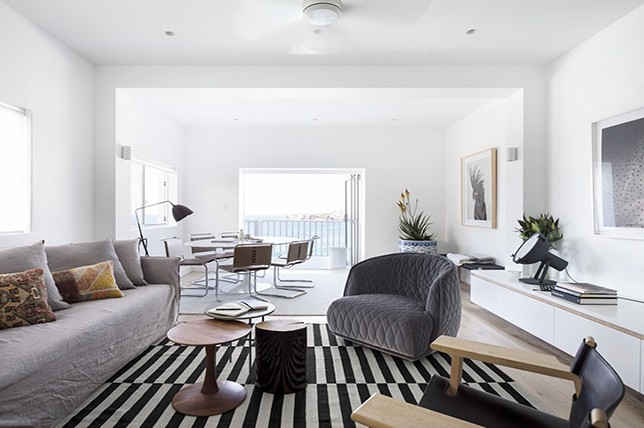
Monochrome design does come with the possibility of looking a little boring – if you are concerned your room is looking a bit quiet, mix it up with texture. For a bedroom, consider introducing a textured headboard for your bed, or textured linens.
For a kitchen, go for a vibrant countertop marble – not just a plain color. In living rooms, think about introducing wood paneling or patterned furnishings to keep the room alive.
ATTENTION TO DETAIL
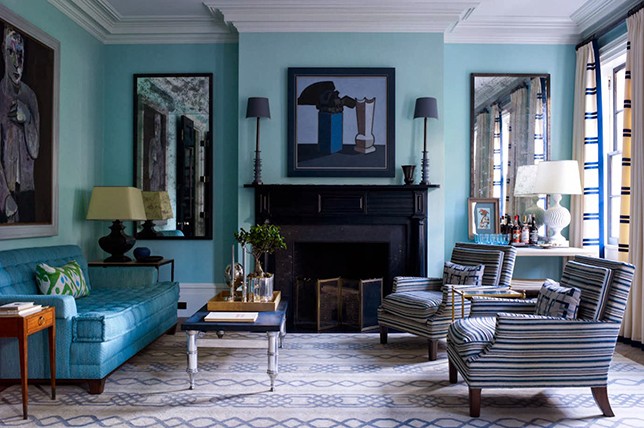
When you are filling your room with similar colors, you can run the risk of the room merging into one, without much definition. This is where your fixtures and fittings come in, and a general attention to detail. In your kitchen, include contrasting taps and cupboard handles to offset a monochromatic design.
They don’t have to be exuberant bright colors, but choosing something with a slightly different tone, which stands out against your monochrome pallet will make a huge difference. Think brass or copper fixtures and fittings against to work with your color scheme.
SOFT AND SUBTLE
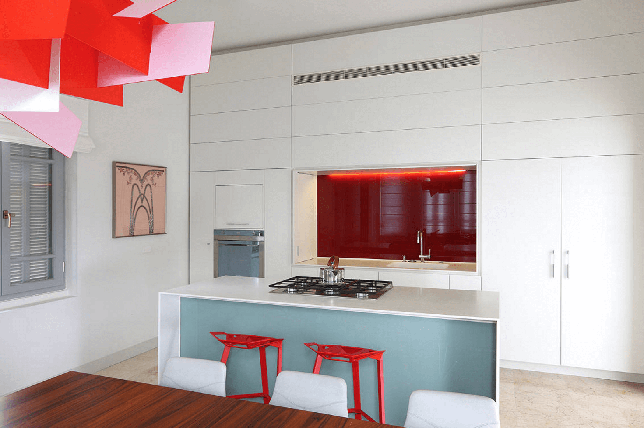
You don’t have to choose colors at the opposite ends of a paint chart to make a statement with monochromatic room decor. Instead, select a few colors close together on the color chart for a stunning, subtle take on a monochrome scheme.
This works especially well with grays, as dark gray can be pretty imposing, especially in a smaller room. Choosing grays closer to one another on the color spectrum will open up a room while making the most of the benefits of monochrome directions.
BE BOLD AND BRAZEN
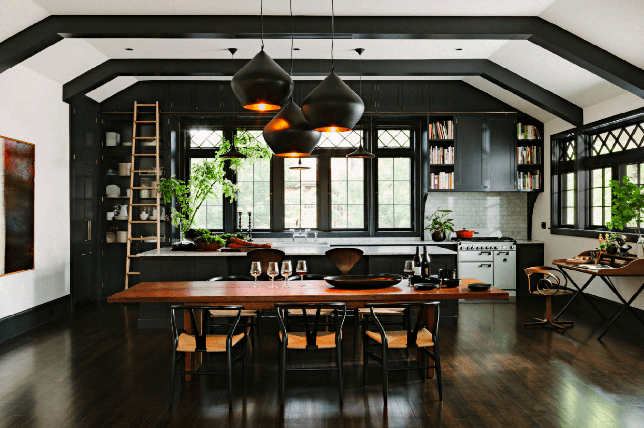
If soft and subtle isn’t for you, go all out and opt for a bright and bold color like lilac, orange, or even green for monochromatic home decor. Bright colors also make for super vibrant rooms while still managing to not be massively overbearing in a monochromatic room.
This type of room design can make a space feel opulent and luxurious, without some of the heavy colors traditionally linked to luxury and opulence. Peach is perfect for feminine monochromatic bedroom ideas, whereas lilac works well for a larger communal space such as a monochromatic living room, kitchen, or monochromatic dining room.
CREATE FOCAL POINTS WITH TONE
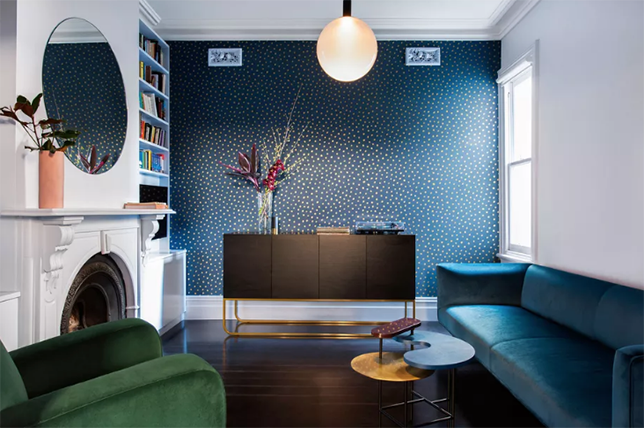
Use color to create focal points around a room and highlight focal points as well. Go for calmer and softer colors for larger spaces, such as walls and furniture, and use bolder colors for smaller accents such as accessories, art, and rugs.
Placing bold accents in front of soft zones of color draws attention to accents in a monochromatic room. Placing lighter tones on walls will also make your room feel larger and more spacious while keeping it cozy and comfortable with accessories.
CONSIDER THE MOOD
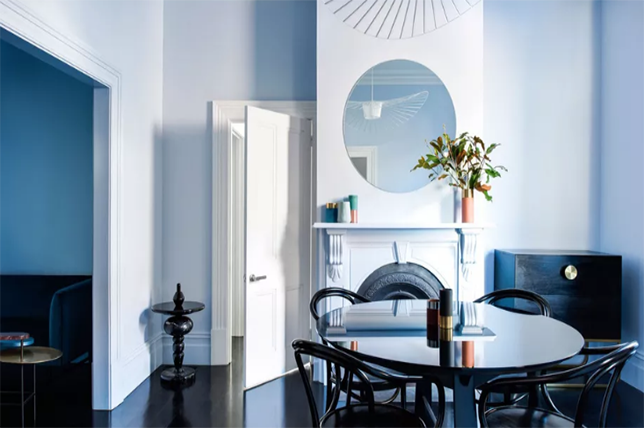
Thinking about the ‘mood’ of your room will help you come up with monochromatic painting ideas and determine your color scheme and tone. Do you want the room to be relaxing or vibrant? Warm and welcoming or cool and calm? For warmth, go for traditionally warm colors, such as pinks, oranges, and browns as a base for your monochromatic interior design ideas.
For something calming, opt for blues, lilacs, and grays for a monochromatic room. If you’re looking for more vibrancy, choose colors spread throughout the color chart. For something more relaxing, opt for colors which reside closely together for a smart approach to monochromatic design.
BREAK IT UP
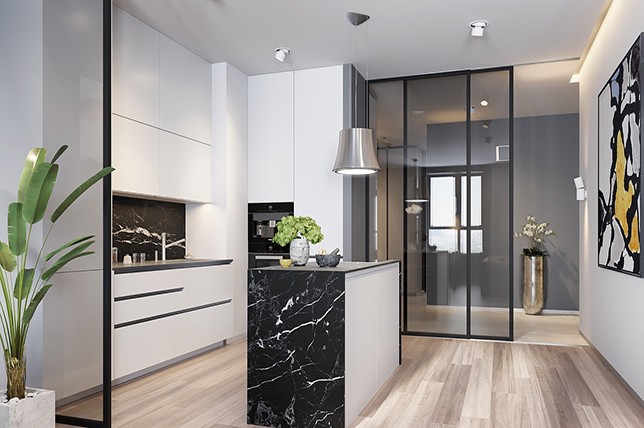
Sometimes monochromatic room decor can be a bit much. This can be easily rectified by introducing black or white as a neutral in the room. To prevent a monochromatic room being overwhelmed by the color you’ve chosen, include areas of bare white space to give the eye a break.
Black can also provide a bold pop of color against a toned-down monochrome room and will help to add depth and personality to a monochromatic interior design.
Unity is vital as it’s what helps define a room while keeping the eye focused yet moving about. And as psychology experts tell us, whenever you enter a room for the first time, your brain relies on pattern recognition to give the room context. The more patterns you take in – repeated colors, for instance, the easier the room is for you to process. And the faster you’re able to take in the elements of a room, the more aesthetically pleasing you’ll find the experience.
Decorating with monochromatic design ideas may seem daunting and even dowdy, but as you can see, the end result can be extraordinary. When you design with a monochromatic color scheme, you instantly see architectural details, unique textures, organic features, and subtle variations of color in your space like never before.
When creating a monochromatic room, we suggest starting from the ground up. Whether you have carpet, wooden flooring, or a sumptuous rug, center your color palette with a dominant color found below and begin layering up, using the color from your floor to your walls, textiles, and furniture. Source elements and essentials in the same color range to easily layer your design. By sticking with the same undertones and hues you’ve selected, it will be all the easier to layer a monochromatic look – just be sure this is a color you’ll like in the long run and don’t go for an on-trend one that will look dated fast.
Monochromatic interior design also allows you the luxury of updating your décor when needed. Establish a base you can layer vibrant textiles and accessories with that will be easy to switch out and move around by painting your walls in neutral colors and selecting furnishings in the same shades.
You’ll find it easy to bring in a juxtaposition of radiant textures, patterns, and extras as you add finishing touches to define your monochromatic space and bring it to life. Finishing touches are of course effective solutions to balance and add unexpected contrasts to a monochromatic room.

